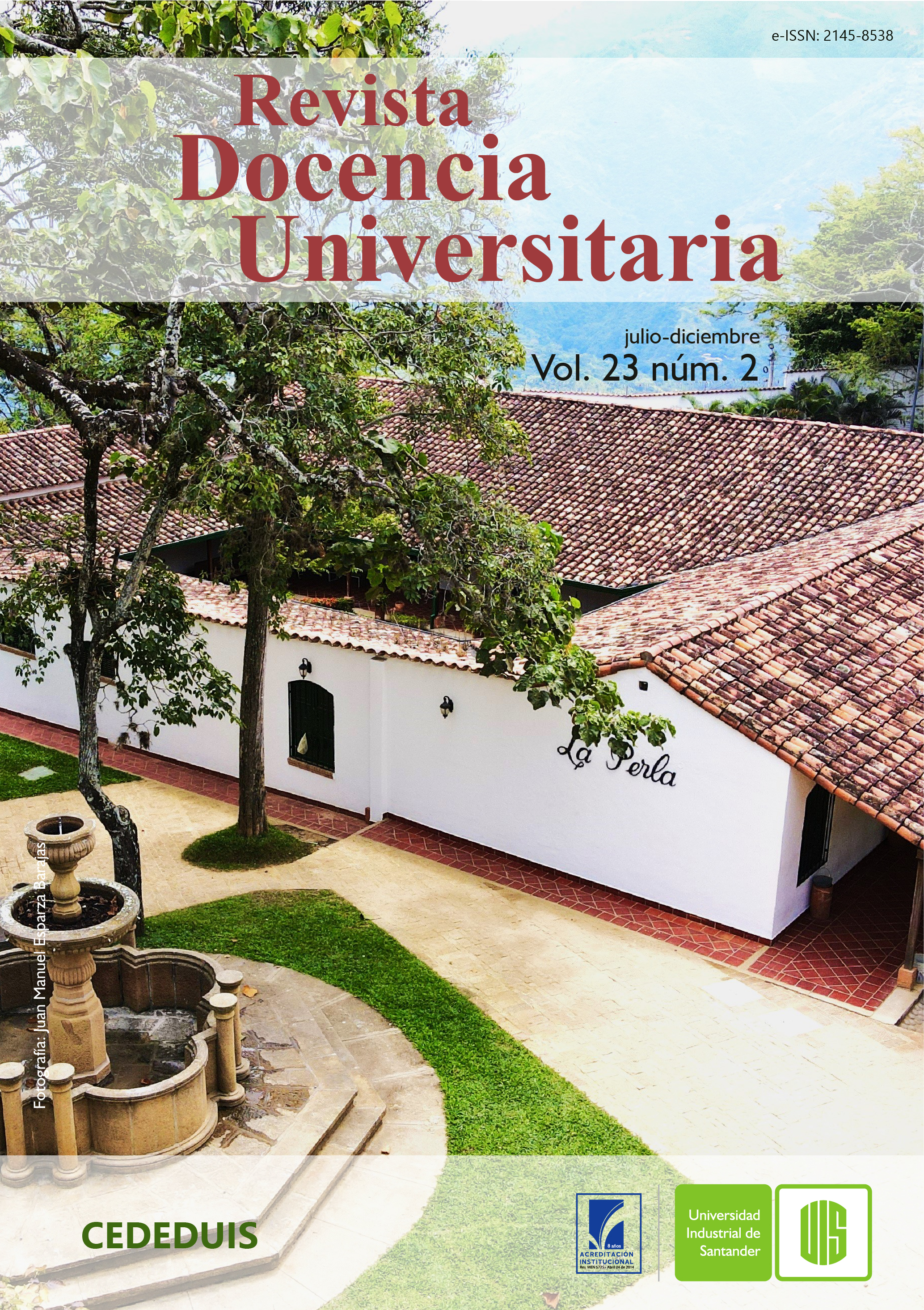Appacirba, a Mobile Pedagogical Strategy of Solution, Motivation and Self-Learning
Published 2022-12-30
How to Cite
Copyright (c) 2022 Revista Docencia Universitaria

This work is licensed under a Creative Commons Attribution 4.0 International License.
Abstract
This article inquires about the difficulties that students have in the appropriation of concepts of the Basic Circuits design, and the factors that do not allow the normal development of numerous class students with limited time and space for interaction with the teacher and technological resources. Similarly, collected information from national investigations and internationally associated with the advantages provided by TIC and, the implementation of mobile devices in training processes
to support a proposal for a pedagogical strategy that, through autonomous learning and motivation strengthens the learning of basic circuit design through a mobile application to tenth-grade students of the Educational Institution Liceo Moderno del Sur The analysis and interpretation of the results were developed under the mixed research approach with concurrent methodological design. These show that basic circuit design learning is strengthened through a pedagogical strategy mediated by a mobile application that is structured from the context, the needs, learning preferences of the students, which include motivating elements such as interactive activities, feedback messages, games and challenges.
Downloads
References
- Carrillo, M., Padilla, J., Rosero, T., & Villagómez, M. S. (2009). La motivación y el aprendizaje. Alteridad. Revista de Educación, 4(2), 20-32. https://www.redalyc.org/pdf/4677/467746249004.pdf
- Sampieri, R. H. (2018). Metodología de la investigación: las rutas cuantitativa, cualitativa y mixta. McGraw Hill
- Leyva A. (2011). El juego Como Estrategia Didáctica en la Educación Infantil. (Trabajo de grado). https://repository.javeriana.edu.co/bitstream/handle/10554/6693/tesis165.pdf
- Peralta, L. (2019). Desarrollo de un Sistema m-learning Para la Asignatura Electrónica Digital II. https://dspace.uclv.edu.cu/bitstream/handle/123456789/11923/Lisenie%20Peralta%20Calder%c3%b3n.pdf?sequence=1&isAllowed=y
- Scorzo, R., Favieri, A. & Williner, B. (2018). Desarrollo de un espacio de enseñanza aprendizaje para realizar actividades con uso de software en una cátedra numerosa. Revista Iberoamericana de Tecnología en Educación y Educación en Tecnología, (21), 77-83. http://www.scielo.org.ar/scielo.php?script=sci_arttext&pid=S1850-99592018000100010&lng=es&tlng=es.
- Zapata, M. (2016). La Motivación de los Estudiantes en el Aprendizaje de la Química. Trabajo de grado de maestría. http://repositorio.utp.edu.co/dspace/bitstream/handle/11059/6119/370154Z35.pdf

